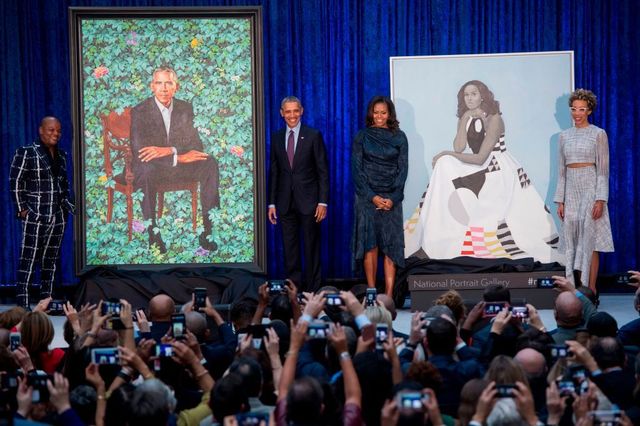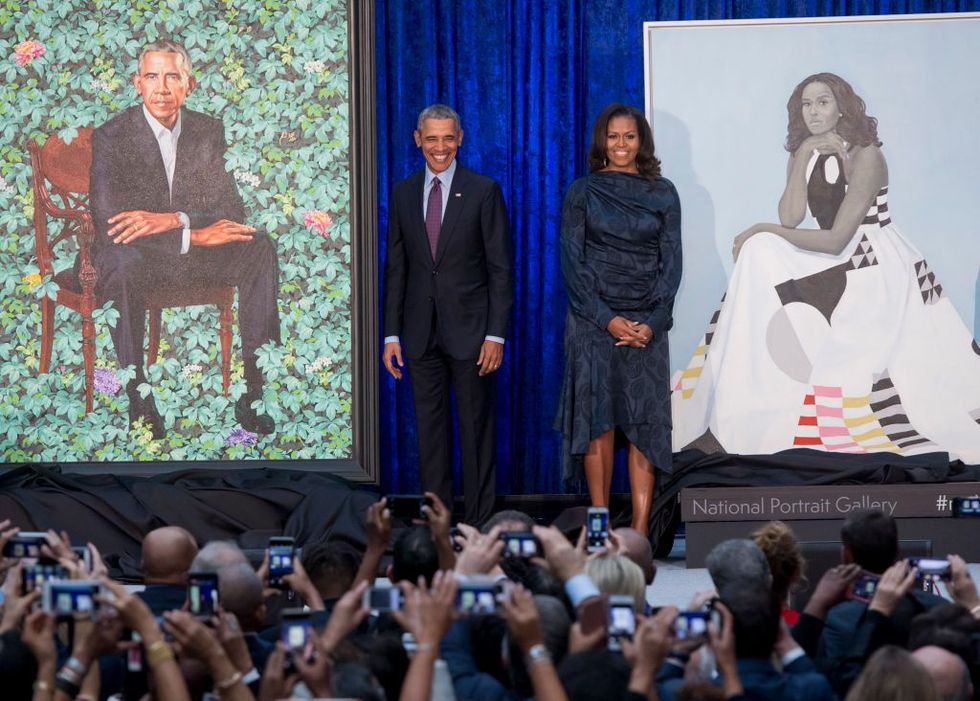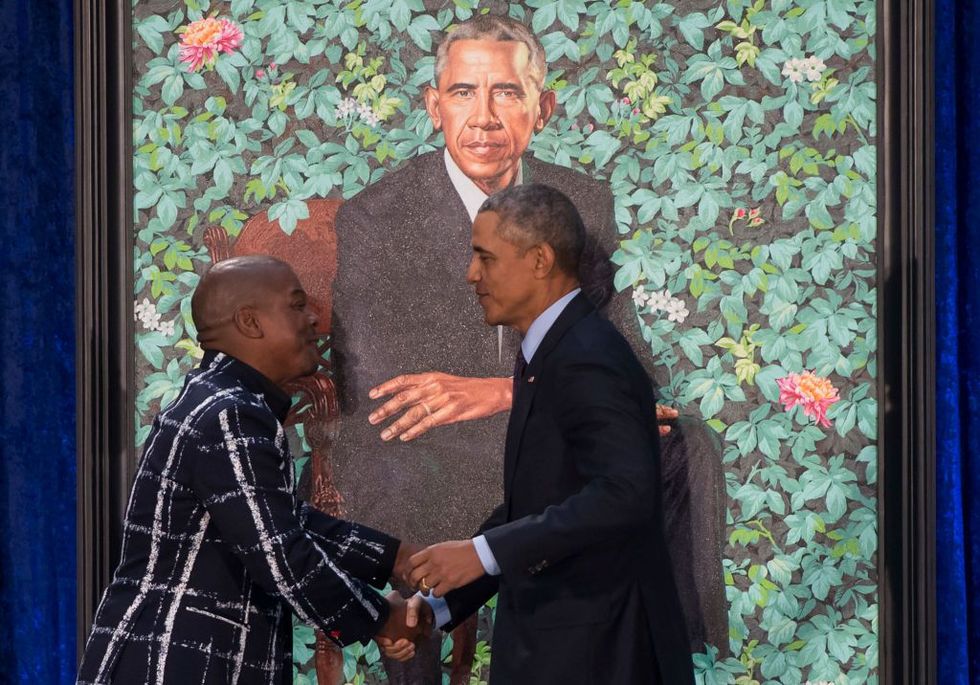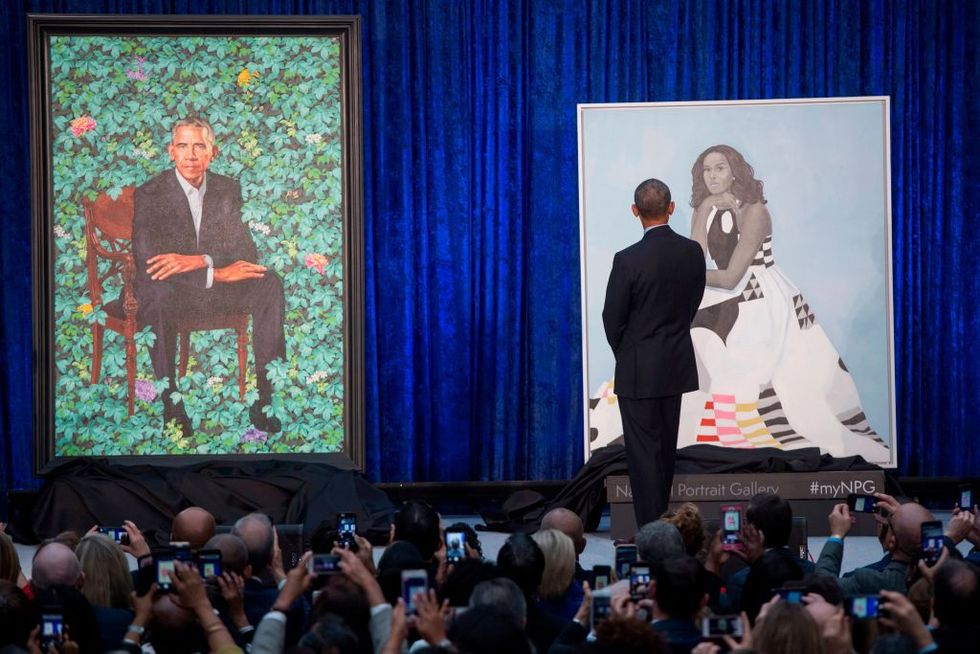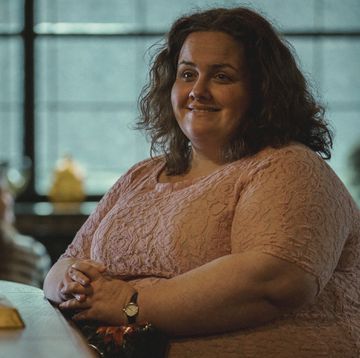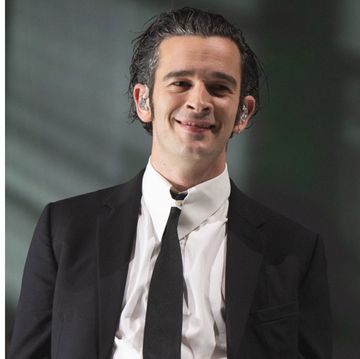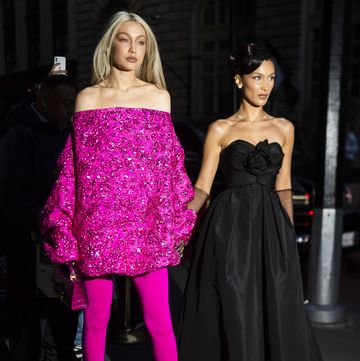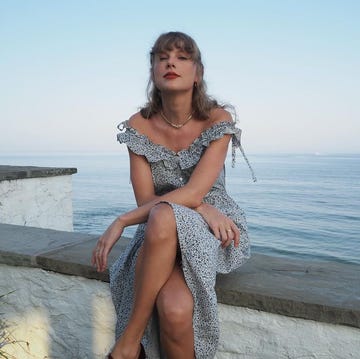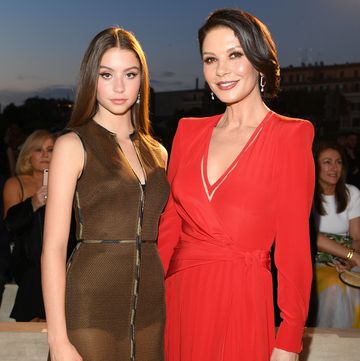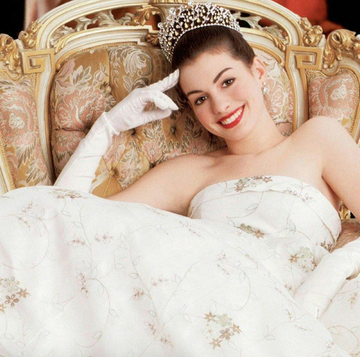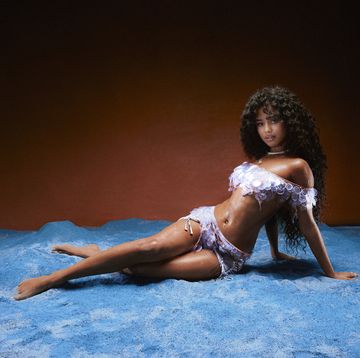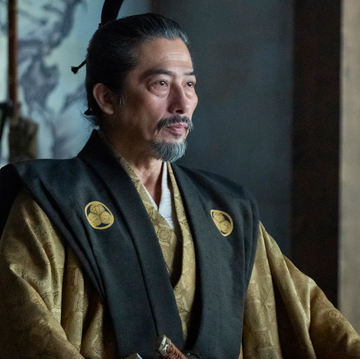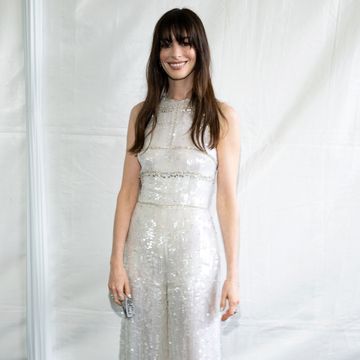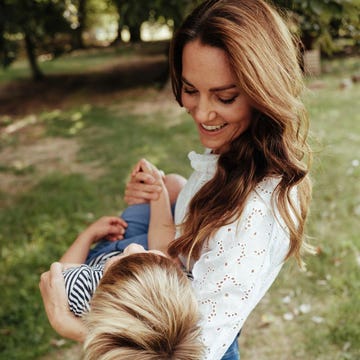This morning, the National Portrait Gallery unveiled their latest additions: official portraits of former President Barack Obama and former First Lady Michelle Obama. Kehinde Wiley, whose gripping work inserts black figures in modern streetwear or haute couture into classical contexts, was selected to paint President Obama. Amy Sherald, a Baltimore-based artist who paints black figures in shades of gray against colorful backgrounds and patterns, was chosen to paint Mrs. Obama.
Mrs. Obama's portrait was revealed first. She is painted seated, in a Milly dress, with her chin resting on her hand. Sherald said at the unveiling that the dress called to mind both Mondrian squares and patchwork quilts made by rural black communities.
Sherald's use of shades of gray to reflect black skin tones challenges the viewer to reevaluate the perceived synonymousness of color and race, particularly with regard to art. Like Wiley, Sherald chooses models from people she sees on the street. She photographs them and paints them against brightly colored or patterned backgrounds, accentuating the monochromatic central figure. In a 2016 interview, Sherald said, "I basically paint people who I want to see exist in the world, but then I also want to creative a narrative that's extricated from a dominant historical narrative. Self-narration is something that we didn't, as black people, have the opportunity for." This objective is particularly resonant with regard to her work with Mrs. Obama, who has had to live into a prescriptive role while also creating a new narrative for herself.
In her remarks, Mrs. Obama expressed gratitude to those who came before her in her journey. "I don't think there is anybody in my family who has ever had a portrait done, let alone a portrait that will be hanging in the National Gallery. But all those folks who helped me be here today, they are with us physically and they are with us in spirit."
Mrs. Obama continued, "I am thinking about all of the young people, particularly girls and girls of color, who in years ahead will come to this place, and they will look up and see someone who looks like them hanging on the walls of this great institution."
Wiley, who was exhibited in the National Portrait Gallery in a 2008 show, places black men and women into heroic, often larger-than-life contexts. He uses vivid colors and a strong sense of movement to situate his figures in the portrait and in the context of history. His work presents an intriguing juxtaposition of contemporary references taken from real life and a visual vernacular that reaches back into the classical foundations of portraiture. In so doing, he elevates the ordinary, particularly the ordinary found in black life, as well as challenging the viewer to see black life as intrinsically artistic and worthy.
In his remarks, President Obama made special note of this aspect of Wiley's work. "What I was always struck by when I saw his portraits was the degree to which they challenged our conventional views of power and privilege. And the way that he would take extraordinary care and precision and vision in recognizing the dignity and grace of people who are often invisible in our lives and put them on a grand scale."
"That's what I think politics should be about: not simply celebrating the high and mighty expecting that the country unfolds from the top down, but rather that it comes from the bottom up."
True to his nature, the former President joked about how difficult a subject he is. After commending Sherald for capturing so many aspects of his wife, including her "hotness," President Obama said he'd tried to negotiate a number of issues. "I tried to negotiate less gray hair and Kehinde's artistic integrity would not let him do what I asked. I tried to negotiate smaller ears; struck out on that as well."
Referring back to Wiley's penchant for elevating his normal subjects, Obama told the artist, "I have enough problems without you making me look like Napoleon." Instead the former president is pictured seated on a simple chair, being enveloped by a leafy green background of vines and flowers from Kenya, Hawaii, and other significant locations in the president's life. These are both prominent and fully integrated in the portrait, the subject of the painting, and also a part of a larger framework.
Referring to art-making, Wiley called it deeply consequential. "It seems silly: it's colored paste, it's a hairy stick. You're nudging things into being. But it's not... This is our humanity. This is our ability to say 'I matter. I was here.' The ability to be the first African-American painter to paint the first African-American president of the United States is absolutely overwhelming."

R. Eric Thomas is a columnist for ELLE.com, where he skewers politics, pop culture, celebrity shade, and schadenfreude. He is also the author of Here for It: Or, How to Save Your Soul in America, a memoir-in-essays.
